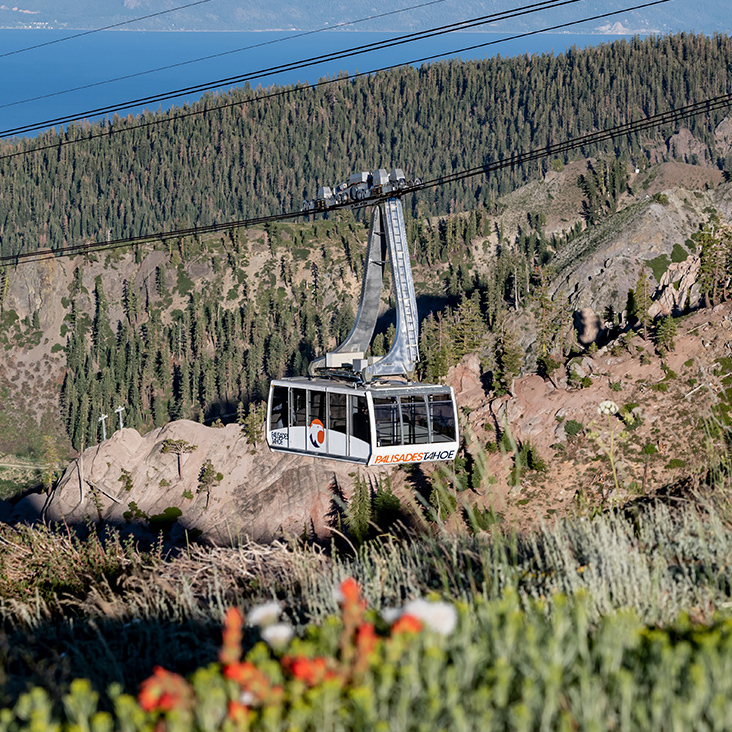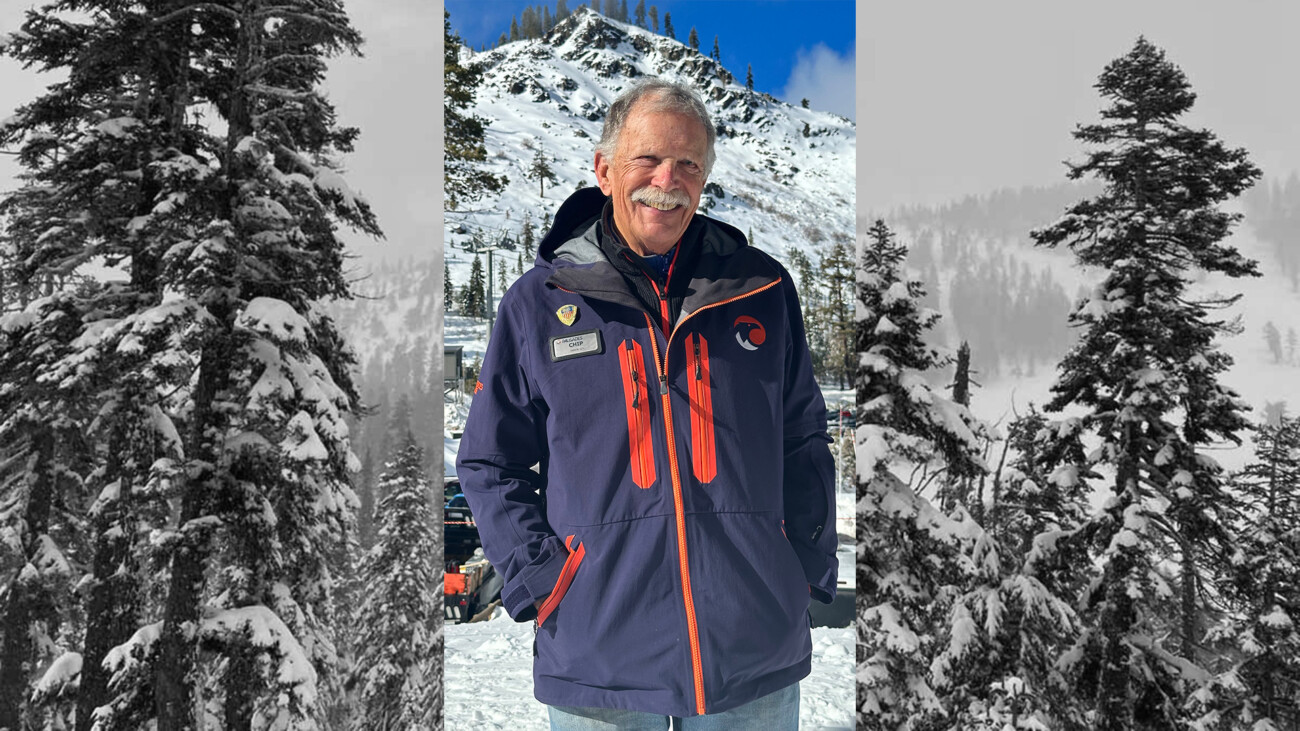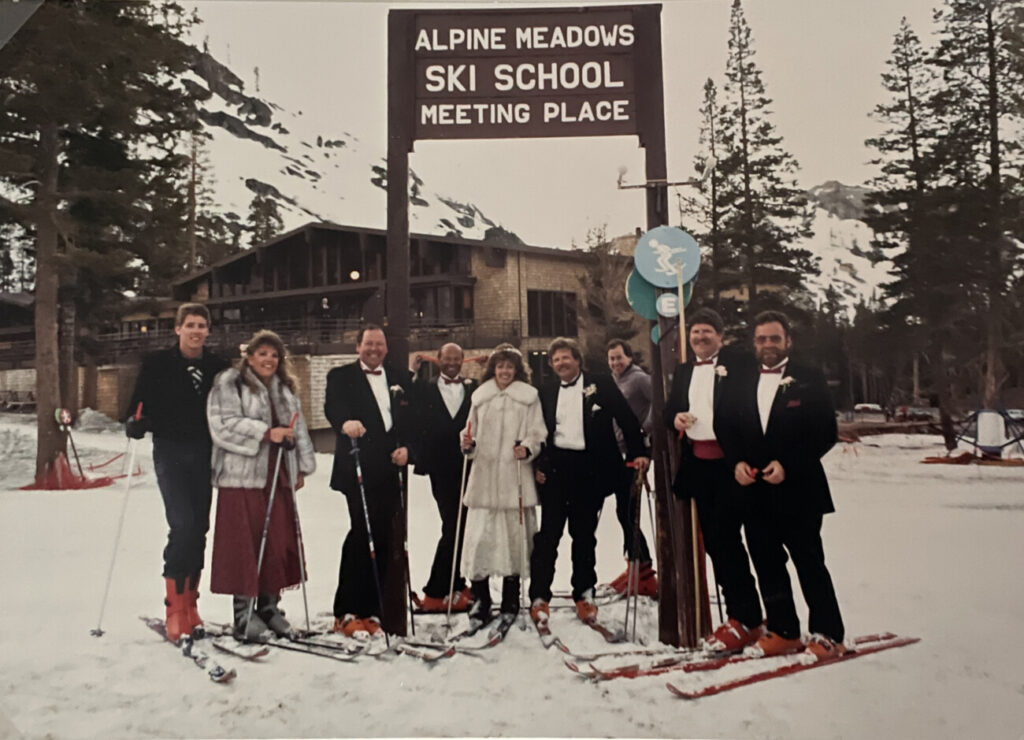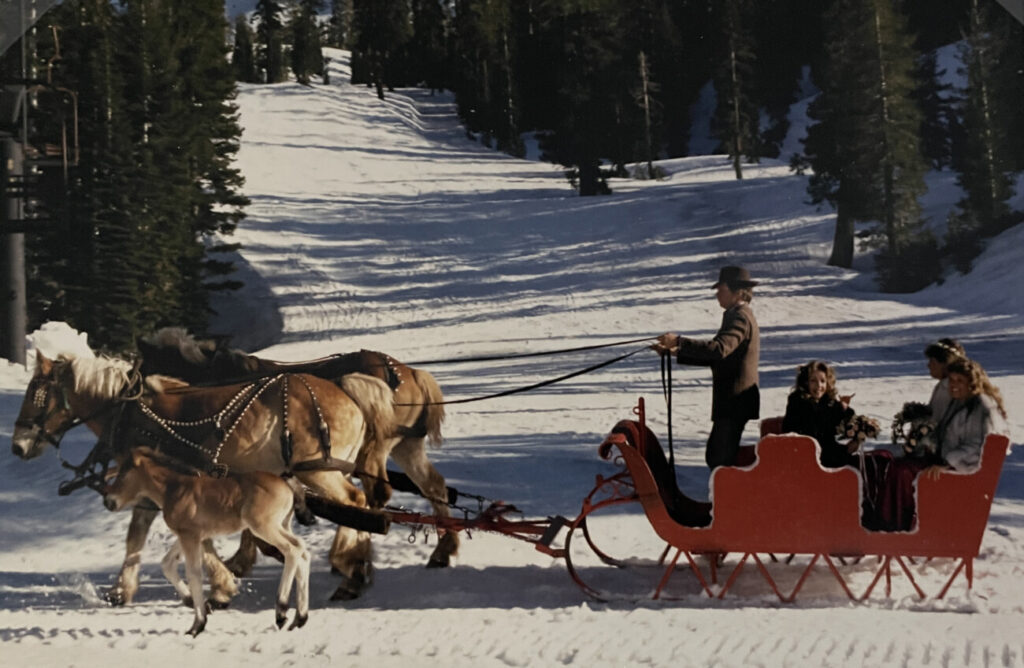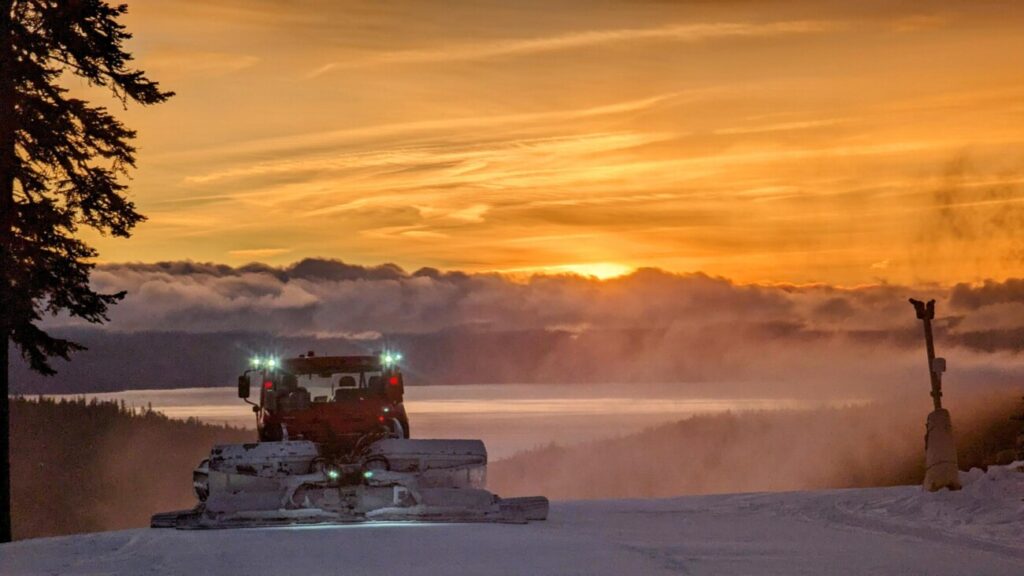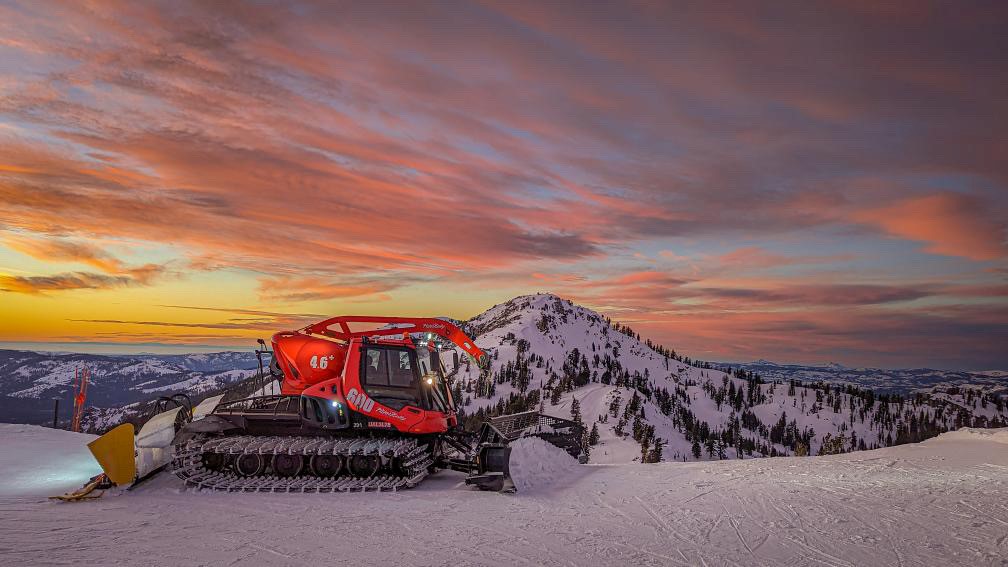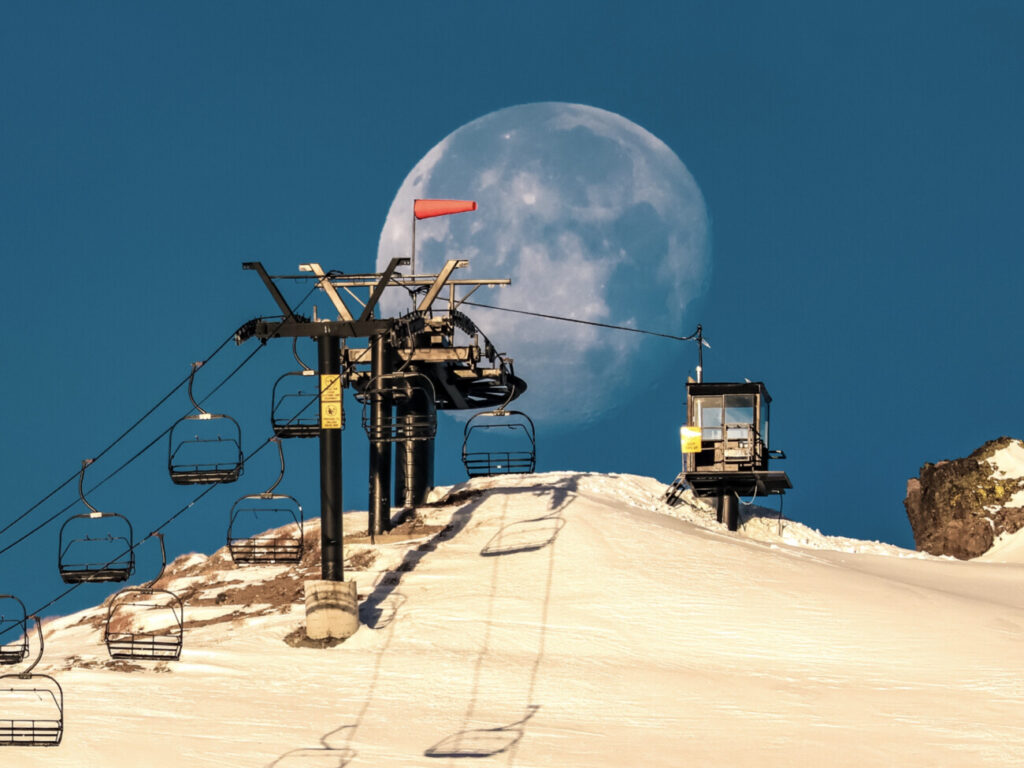Chip Lambert’s remarkable journey through 57 seasons at Alpine Meadows is a testament to his enduring passion for skiing and commitment to sharing the sport with as many people as possible. His journey is an inspiring narrative of a life deeply intertwined with the mountains he loves.
You’re originally from Hanover, New Hampshire. How did you end up in Lake Tahoe?
Skiing was a way of life in Hanover. I started skiing as a toddler, and worked my way through different ski teams there. Early in high school, my family relocated to Sacramento. We thought ‘California? Have they even heard of snow there?! Turns out, they had, and I joined the Red Hornets race team based out of the old Edelweiss ski area off of Highway 50. Spider Sabich (pro ski racer in late 1960s ∕ early 70s) was a teammate at Edelweiss, and we did a junior race together at Alpine Meadows soon after the resort opened in 1961. The race was on Yellow Trail, and it was a powder day – basically, it was perfect.
After high school, both Spider and I were accepted to the University of Colorado. I arrived, looked at the ski team and thought ‘I don’t think I’ll be able to do much racing with these guys.’ I mean it was Billy Kidd, Jimmie Heuga, Bill Marolt – basically almost the entire U.S. Ski Team was going to school there! Luckily, a friend with a car offered a backup plan: we both started teaching at Berthoud Pass Ski Area and continued there throughout college. I found a real passion for instructing.
When I moved to San Jose for grad school, I remembered that early race at Alpine Meadows and decided to try to get a job there. I had no intention of applying anywhere else, even at S***w Valley, where I watched the Winter Olympics in 1960. Alpine was it for me.
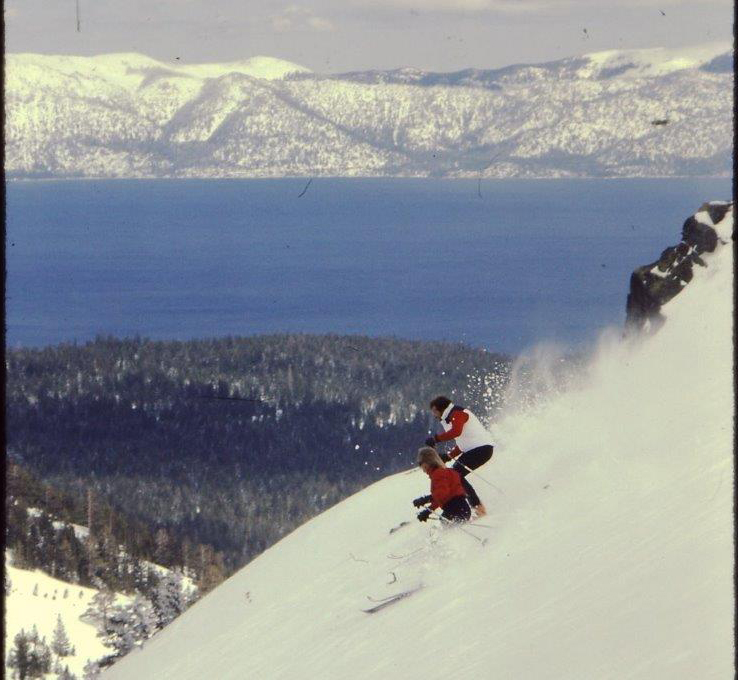
How did the ski instructor interview work back then?
Werner Schuster (the Werner’s Schuss run at Alpine Meadows is named after him) was the Ski School Director at the time. It was late in October 1966 and no lifts were running, so we had to wear our ski boots and carry our skis from the base to the top of Summit Bowl. There was a little patch of snow up there, and all the candidates had to ski on this one patch and somehow demonstrate their abilities before hiking back down. Luckily, Werner offered me a job. I started teaching part-time that winter, and haven’t stopped since. Even when I worked in Saudi Arabia for 5 years, I would use my annual leave to come back and teach here.
What is the hardest part of being a ski instructor?
The actual teaching! We need to keep the instruction interesting, creative, and productive so that the student can have fun and learn without being intimidated. You are giving people the chance to develop their skills, but you also need to ensure they don’t get into any danger while doing so.
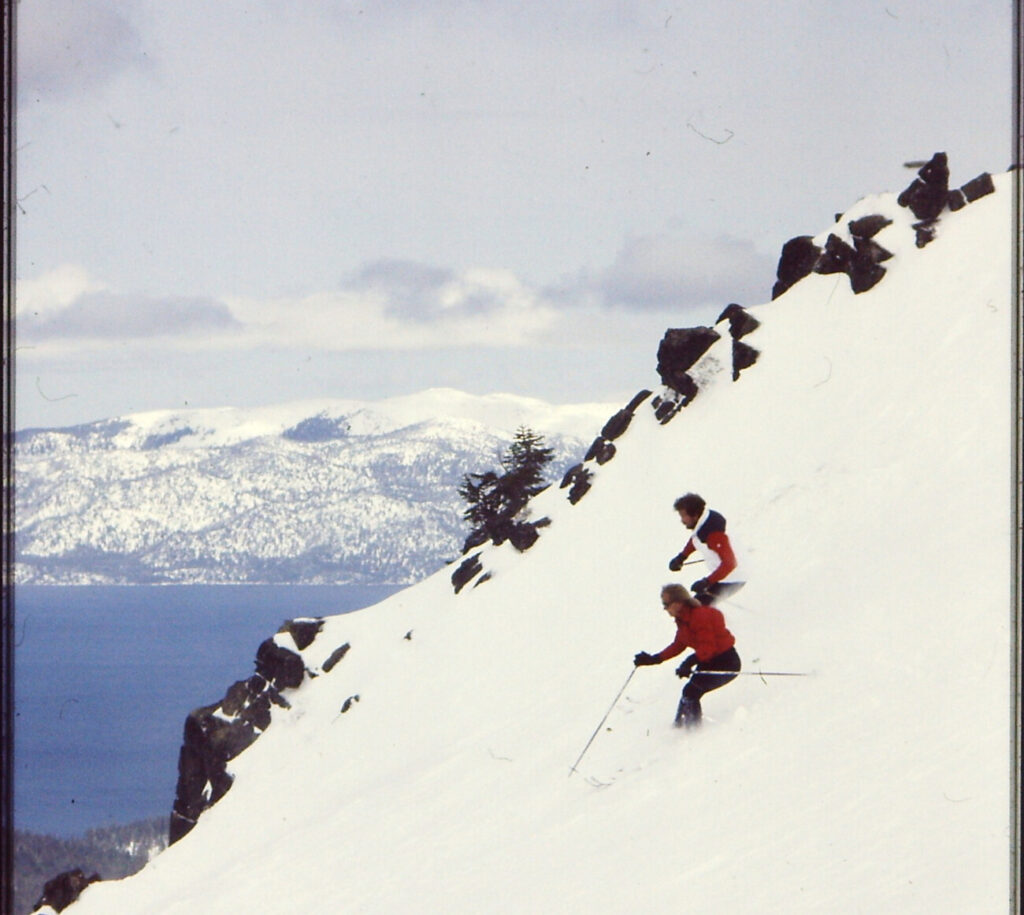
Have you ever found yourself in danger while skiing?
It had been snowing for days, and not many people could make it to the resort. One day Jorg Dutschke (another instructor) and I didn’t have students, so we were doing laps on Roundhouse because it was the only lift open. We would look for our tracks every ride up the lift, but never see them because it was snowing so hard. We skied all day, and on the last run we skied down the spine of Gunner’s Knob where the old avalanche army howitzer was located, and then around to the face. As we came around, the whole face slid and we found ourselves right at the fracture line. We went from being on top of the snow to having a wall about 4 feet high on our left shoulder. If we’d have been down maybe 10 feet further, we would have been completely buried. As we were catching our breath, Jorg turned to me and sort of blithely said “I don’t think we’ll be skiing here tomorrow.” He was right, but not for the reasons you might expect. The next day was March 31, 1982, the day a deadly avalanche hit Alpine Meadows.
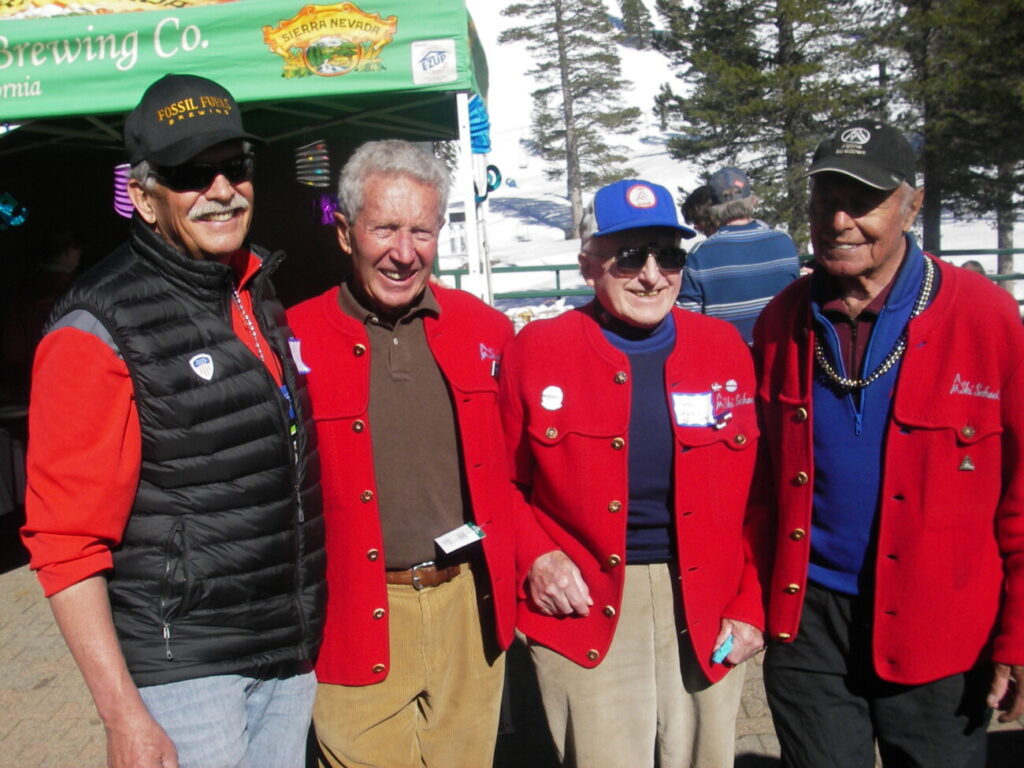
You’ve really been through a lot of history at Alpine Meadows. What’s the best thing about working here?
From the start, I think it’s been about the interaction with the other instructors. People come from very diverse backgrounds, and there are folks here with an incredible level of talent. The beautiful thing is that everyone is supportive and willing to share their experiences. There is so much to learn; you can get into engrossing discussions like examining the minutiae of turns (no, really, believe me, it’s fascinating!), and always count on being challenged both intellectually and physically.
Do you have a favorite memory?
When I got married, it seemed natural to have the ceremony on the deck of the Chalet. I always thought of Alpine Meadows as my family, and like any tight-knit clan, they took care of everything for us on that day. It was an April afternoon and the resort had closed to the public. The wedding party, which included my brother and fellow instructors, took the old Hot Wheels lift up the mountain and then skied down to the Chalet. Non-skiing guests were brought up by snowcat. My bride Pam arrived in a horse-drawn sleigh with her bridesmaids. It was incredible.
Side note: We recently started offering weddings at Alpine for the public!
And how about when you got a run named after you?
Yes, there is that too! When Jorg Dutschke and I celebrated our 50th anniversary of service some years ago, Alpine threw us a big party. In addition to a lifetime ski pass, we had the opportunity to each name a ski run. Jorg chose a run off of Lakeview where he ran his ski racing training program. I ended up selecting one of the Tiegel Chutes. The Chutes are some of some of my favorite runs at Alpine, especially on a powder day, and I chose the one that I especially enjoyed over the years. There’s a sign up there marking it as “Chip’s Challenge.”
What happens in the summer? Do you chase the snow?
Actually, in the summer I teach scuba diving and explore shipwrecks in different parts of the world – I’ve found three previously undiscovered wrecks so far! The dull part of my life is being a microbiologist. I spend time in labs playing with bacteria, viruses, and fungi that have virtually no conversations with you at all. There’s a lot of quiet work like reading, writing papers, filing patents – it’s a different kind of job for sure, but luckily one that allows you time to sit and daydream about either skiing or diving!
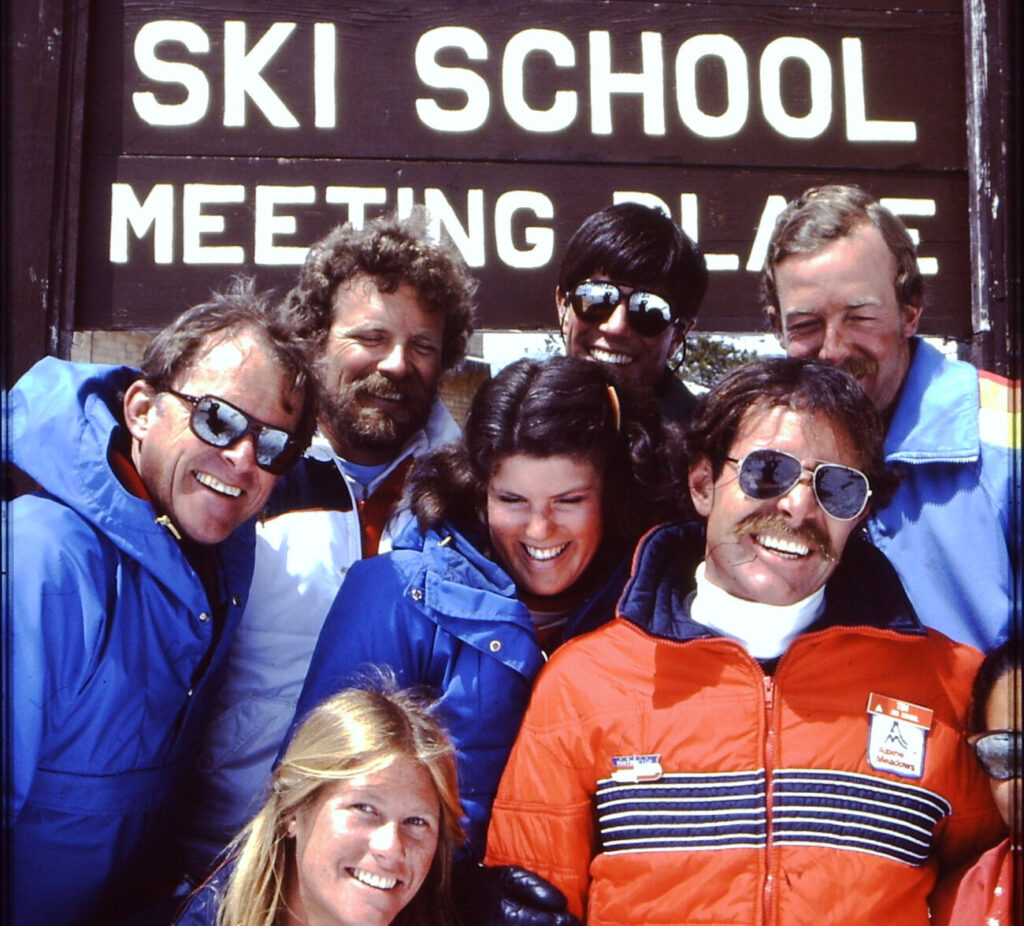
What advice would you give to someone who wants to be a ski instructor here?
Probably the most important thing is to examine why you want to be an instructor. Hopefully, you want to do it because you enjoy the sport and want to share it, not just ski around in a fancy uniform and have people look at you. Sure you need the physical skills, but you also need the desire and enthusiasm to pass on those skills. You are going to help new skiers to not only learn the art of skiing, but also the
simple enjoyment of spending time in the mountains.

